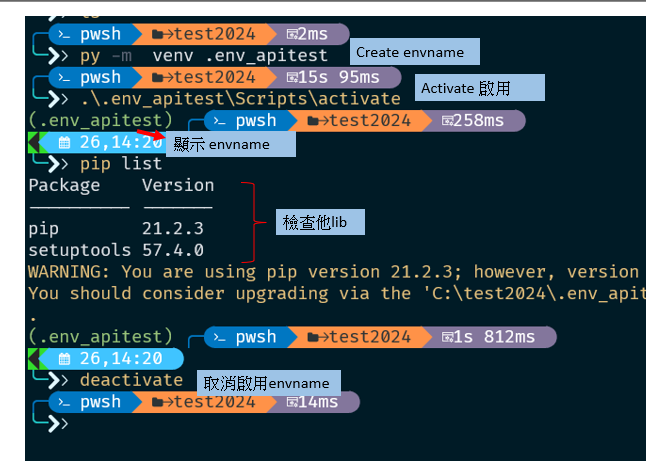SSH利用Key登入
我想大家都知道 SSH 是什麼,也很多人應該已經會用 SSH Key 可以免輸入密碼就可以 SSH 登入。我想信大家用 github 應該都會用,但我今天不是要用 github 我要用 ubuntu 當作 SERVER, window 當做 client. 其實做法是一樣,github server 當作我自己 ubuntu server。
很多時候你用 github 可能一些 server 上運作可能你不太知道背後的運動是如何,今天可以介由者個範例可以理解更多以真實 server
請務必先安裝 openssh 能用
1 | sudo apt install openssh-server |
- 公鑰跟私鑰是一組,這樣才可以連線,他們會做連結
- Private Key 私鑰: 要存在你自己電腦
- Public Key 私鑰: 要放在本地端要連到 Sever。
client 建 Key
這個方式是最常用的方式,就跟 github 一樣,本地端會建 private 和 public key,然後把 public key 傳到 server 上面並加入 Server 上的 ~/.ssh/authorized_keys 檔案中。)
以這個範例我本地端(Local/Client)要用 SSH 遠端到 Server 端,我需要把我的公鑰(public key)傳到 Server 這樣私鑰做連線會跟 Server 公鑰比對,是同一組就會連線。
- 在 SSH 連線中,Client 會先產生一組公鑰(public key)和私鑰(private key)。
- 公鑰會放到 Server 上,而私鑰只保留在 Client。
當 Client 嘗試連線時,會使用私鑰(private key)來進行驗證,而 Server 會利用它儲存的公鑰來驗證 Client 的私鑰是否正確,確認是同一對金鑰後,即可成功連線,我下面我教如何做到。
Rassberry Genie ACS
今天想分享我用 Rassberry PI5 架 ACS Server,如果你知道 ACS Server 是甚麼,可以看我如何架。ACS Auto Configure server,類似遠端的工具可以看到你的通訊產品的狀況如上線時間,reboot,更新 FW 等等
Note:
For English Note please refer to my github note link
Raspberry PI Model
Check Ubuntu Version
1 | lsb_release -a |

Check Kernel
1 | uname -ar |
check Raspberry Model
1 | cat /proc/device-tree/model |
Setup Ngix and docker
Python to exe
今天想分享如何用 python 轉 exe,也就是說如果你把你的 python 檔案轉成 exe 放在其他電腦就可以執行。這個好處就是你不用在其他電腦安裝 python 或其他 library,就可以用。
Install Pyinstaller
這有很多方法和套件可以用,但我都用 pyinstaller
安裝 pyinstaller:
pip install pyinstaller
pyinstaller 用法
- 基本用法
1 | #simple convert |
- Adding Icons:
可以在下面連結下載 ico 也可以用,下載會是 .png檔案,需要轉成 .ico
1 | pyinstaller --onefile --icon=myicon.ico your_script.py |
update_python_jupyter
This is a note for change your python version in jupyter Notebook. 今天想要分享如何換在 jupyter Notebook 換不同 python 般本
Please Install latest python for example python 3.13 which is the latest version, if you are going to switch to python 3.13. You don’t have to install latest version, it’s because I want to switch to python3.13, please be noted.
請務必先安裝最新的 python 3.13,由於我要切換到 python 3.13,因此必須要先安裝 python 3.13。
Changing python version in jupyter
Step changing python version
Step1: Install package
Install Jupyter (optional):
pip install jupyterInstall ipkernel:
pip install ipykernel
You can also install under virtual environment
1 | #1. create virtual env with conda |
you can also use conda command conda env list to list virtual env.
Rename_and_List_file_example 列出檔案目錄和如重新立名
今天我想分享關於目錄和檔案相關範例,如重新立名,出檔案,我會用很多方式呈現出來。
List current directory 目錄利出檔案
list your file in current directory 目錄列出檔案
我們常在 linux 和 window 都會用 ‵ls‵ 或 ‵dir‵ 來列出我們目錄底下所有檔案。 可以用 os.listdir() 就可以利出所有目錄和檔案
目前目錄下:
os.listdir()指定位置:
os.listdir(path)
1 | import os |
output:
1 | counter.py |
filter specific file or file type 篩選檔名
有幾個方式可以用,如果要指定檔案類型 我們可以用: startswith() 或 endswith().
count_string_occurrences 文字出現的次數
This exercise is to show you how to count your string occurrences, or how many duplicated value. 我想分享如何找估重複文字次數。
iterate through list, and store in dictionary
[方法一] 基本 loop 把它存在 dictionary
output:
{'James': 1, 'Kelly': 2, 'Sammie': 1
1 | listofName=['James','Kelly', 'Sammie', 'Kelly'] |
其實可以寫成更簡短方式,其實跟上面方式一樣
1 | listofName=['James','Kelly', 'Sammie', 'Kelly'] |
如果沒出現就離開,出現就會+1,也可以這樣做 1+dictcollect.get(name,0)。
dictcollect.get(name, 0) checks if the name already exists as a key in the dictionary.
If it exists, the current count is retrieved.
If it doesn’t exist, 0 is returned.
[方法二] collection 裡面的 count
Function Annotations
Understanding Function Annotations -> ,:
Today I would like to share when we see an arrow or colon on function, basically there’s a term Function Annotation. I see some turtorial and see many developer beeen using it, and went and research on it.
You can think it’s just a comment, nothing else. It to tell people about your code expectation, like data type or return value. So let me show you some examples, and you will see the arrow or colon doesn’t mean anything, it just to tell people what this variable mean.
1 | def velocity(s: 'in miles', t: 'in hours') ->'mph': |
output:
{'s': 'in miles', 't': 'in hours', 'return': 'mph'}
from above example it just to tell user s is in mile, t is in hours, and return mph
You will see many people use like this to define datatype:
1 | def calculate(a: int, b: int)-> int: |
overall it just to tell people what the code expectation is or are.
Virtual Environment
今天來分享如何應用 virtual env 來提高工作環境等效率。如果使用 python library 我想信很多時候都會用 pip 來安裝他的 library 等 module。如果某些套件版本跟你專安不 match 造成無法 code 無法運行怎麼呢?這時你只有降版本,也就是可能要先移除再安特殊版本。另一種方式就是建立一個 virtual env 也就是類似虛擬環境,這裡可以安裝任何 package or library 跟主環境分離不會有相關。
我覺得這個很好用,如果你原本主環境安裝太多 library 你有時還要 debug,你可以一開就建立在乾淨環境,再安裝你要安裝個 library or module 等 package。
可以用這兩終方式建立 virtualenv,如:
virtualenv: 需要安裝套件venv:內建就有無須安裝特建
venv
Syntax:
python -m venv <my_env_name>
EX:python -m venv venv
- 如何用
1 | #create new directory |
